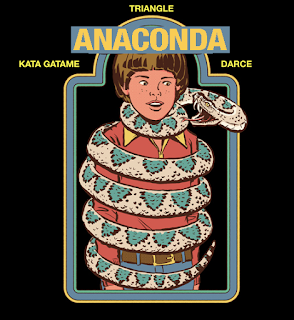One Head - One Arm … Four Chokes.
 A simple recipe - one head and one arm - only two ingredients needed; but we have a number of variations on how these ingredients can be woven into some of the most commonly employed and highest percentage chokes in BJJ.
A simple recipe - one head and one arm - only two ingredients needed; but we have a number of variations on how these ingredients can be woven into some of the most commonly employed and highest percentage chokes in BJJ.
They give us the Darce, the Anaconda, the Kata Gatame and the Triangle.
Many times I have quizzed students on the differences between them - and have received a number of answers (arm penetrates from armpit to neck, visa-versa, the spelling is different, etc)
But I am here to outline the most meaningful difference (because there are differences indeed, but most of them are, in my opinion, simply not very meaningful). The meaningful difference between the Darce, the Anaconda, the Kata Gatame and the Triangle is to have an awareness as to which part of the choking mechanism stops the opponent from escaping/resisting the choke.
In the Darce - it is the chest; in the Anaconda it is the inside of our thigh; in the Kata Gatame it is our head or our hip (depending on the variation); in the Triangle it is the locking leg.
Remember this - there are two main elements to most chokes: the mechanism that stops the opponent escaping/resisting/unravelling the choke - and the part of the choke that applies force to the carotid arteries/neck/wind-pipe. Being clear on these two mechanisms for each and every choke, greatly deepens our understanding of how the choke can be applied effectively in training.


Comments